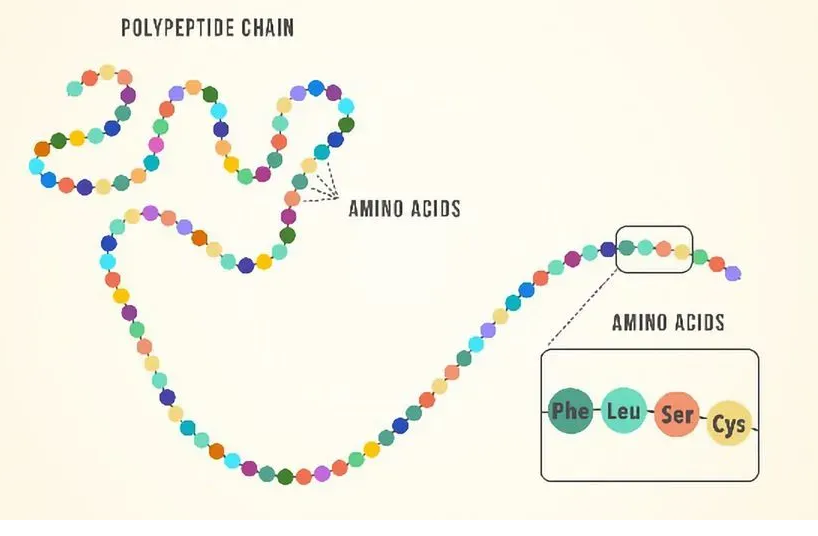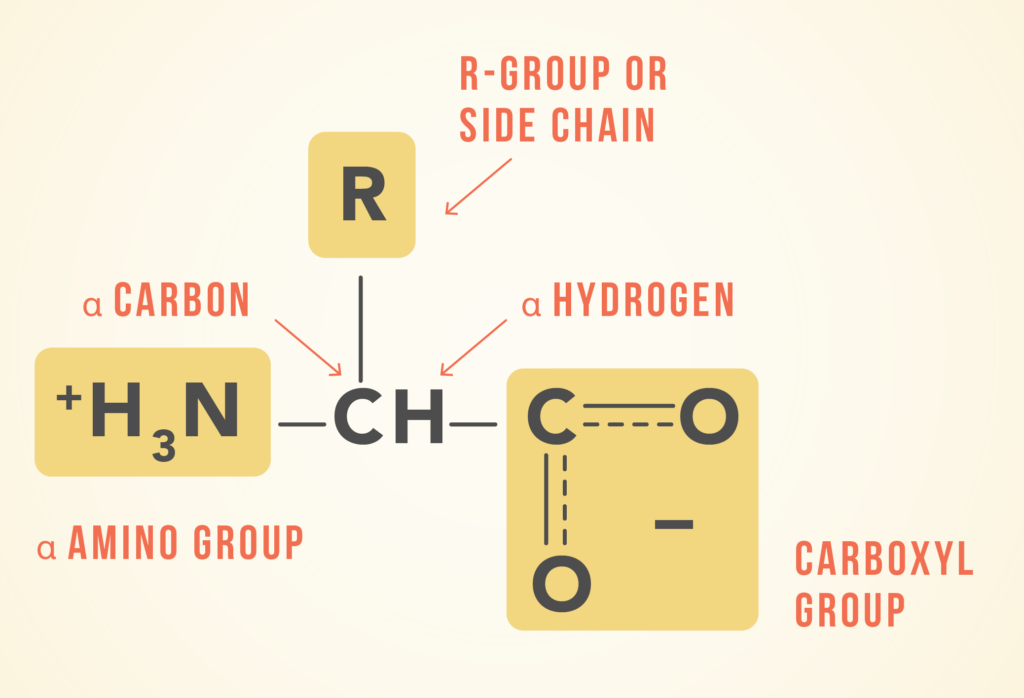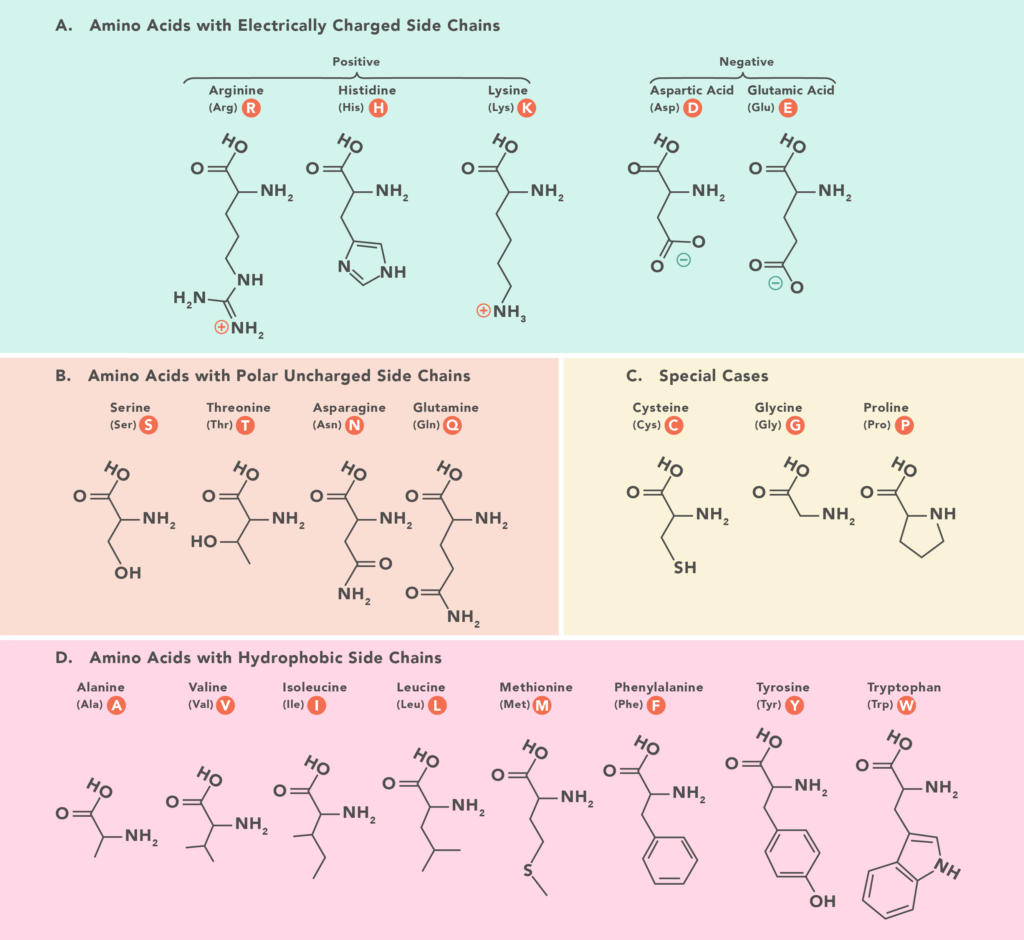Amino acids are the building blocks that form polypeptides and ultimately proteins. Consequently, they are fundamental components of our bodies and vital for physiological functions such as protein synthesis, tissue repair and nutrient absorption. Here we take a closer look at amino acid properties, how they are used in the body and where they come from.


.
.
Amino acids are in an equilibrium between two acids with the proton (H+) moving between the amino group and the carboxyl group as shown below.

The simplest, and smallest, amino acid is glycine for which the R-group is a hydrogen (H). They can be subdivided according to their properties, dictated by the functional groups they possess. Broadly they are divided by charge, hydrophobicity and polarity. These properties influence the way they interact with surrounding amino acids in polypeptides and proteins, and consequently impact protein 3D structure and properties.

.
Amino acid abbreviations.
This table shows the abbreviations and single letter codes used for the 20 amino acids found in proteins. In addition, pyrrolysine, used in the biosynthesis of proteins in some archaea and bacteria but not present in humans, and selenocysteine, a cysteine analogue only found in some lineages, are included in blue. Finally, abbreviations used for amino acid residues with more than one potential identity, and the termination codon are shown in red to complete the alphabet of single letter abbreviations.